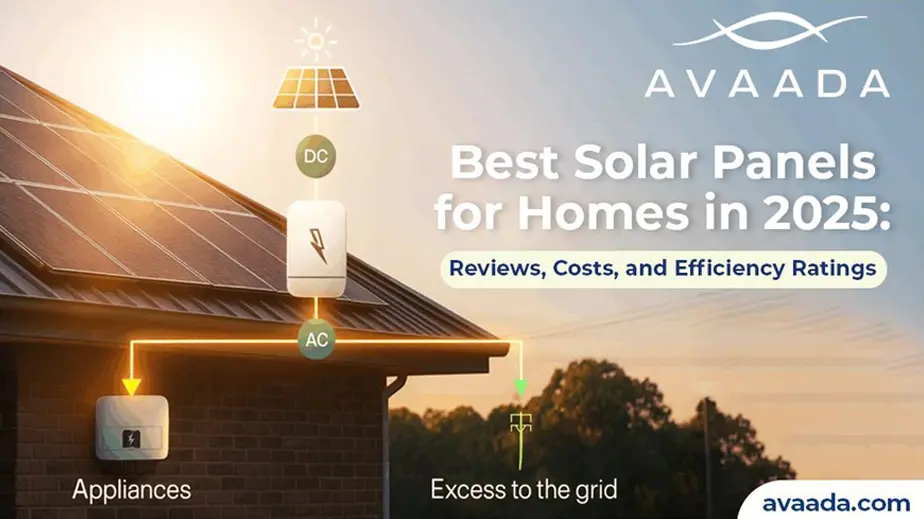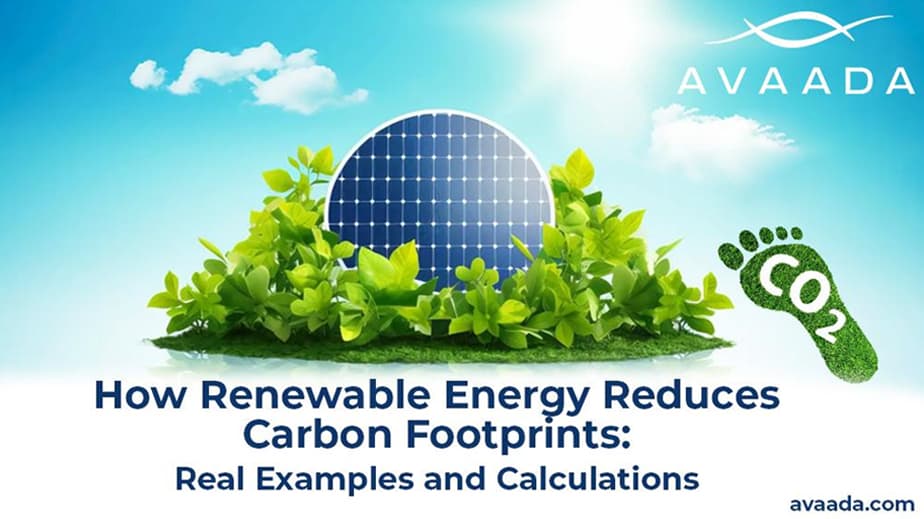The solar energy sector is undergoing rapid transformation. New technologies, cost reductions, and global sustainability goals drive this change. As nations aim for a low-carbon future, innovations in solar energy technology are key to making renewable energy more efficient, scalable, and accessible. Avaada is involved in developing integrated solar solutions that include advanced panels, smart storage, and green fuels to support a sustainable energy future.
The Need for Solar Innovation
Solar energy has become the fastest-growing renewable energy source globally. Yet, challenges such as intermittency, the limited efficiency of traditional panels, and grid integration have spurred research into new solar panel technology and future trends in solar energy. Innovations address these limitations by enhancing energy conversion, reducing costs, and enabling hybrid applications, such as the production of green methanol and green hydrogen.
Integrating solar into urban infrastructure, industrial sites, and rural electrification projects is critical for reducing carbon emissions and supporting sustainability goals. Advanced solar technologies and pumped storage hydropower (PSPs) provide round-the-clock clean energy while ensuring grid stability and reliability.
1. High-Efficiency Panels
Recent breakthroughs in new solar panel technology are significantly increasing efficiency:
- Tandem and Perovskite Cells: Tandem cells stack multiple layers of photovoltaic materials, enhancing energy conversion efficiency beyond 25%. Perovskite-silicon tandem cells have achieved record efficiencies of up to approximately 33.9% in laboratory conditions, although commercial deployment is still emerging. Perovskite-based tandem panels are cost-effective and lightweight, making them suitable for large-scale and rooftop installations.
- Bifacial Panels: These capture sunlight on both front and back surfaces, increasing yield by up to 30%. They are especially useful in reflective environments, such as deserts or snowy regions.
- Flexible and Lightweight Panels: Advances in materials have enabled the creation of flexible panels that can be seamlessly integrated into vehicles, portable systems, and building facades. Although promising, commercial adoption is still in development.
2. Smart Solar Technologies
Modern solar systems increasingly incorporate innovative solutions:
- Smart Inverters: These devices manage the energy flow between panels, storage, and the grid, improving efficiency and enabling seamless integration with smart grid systems.
- AI and Blockchain Integration: AI optimizes production and consumption patterns, while blockchain ensures secure and transparent energy transactions. Note that blockchain energy trading is currently in pilot stages in some markets.
Avaada’s integrated solar projects combine advanced panels with smart inverters and predictive monitoring to support efficient energy utilization and reduce downtime.
3. Energy Storage Solutions
Energy storage is crucial to overcome intermittency in solar generation:
- Battery Energy Storage Systems (BESS): High-capacity lithium-ion batteries remain dominant, while solid-state batteries are promising but are not yet fully commercialized. These allow energy to be stored during peak sunlight hours and dispatched during demand peaks.
- Pumped Storage Hydropower (PSPs): PSPs act as “giant water batteries,” storing excess solar energy by pumping water to an upper reservoir and releasing it to generate electricity when needed. Avaada’s PSP projects provide long-duration energy storage, support grid balance, and reduce reliance on fossil fuels.
These storage solutions enable industrial, commercial, and utility-scale solar projects to deliver round-the-clock renewable power while supporting ESG commitments and reducing carbon footprints.
4. Integration with Green Fuels
The future of solar energy extends beyond electricity to encompass green fuels:
- Green Methanol: Produced using renewable electricity and captured CO₂, green methanol offers a sustainable fuel alternative for shipping and industry, although its production is still in the development stage. Solar energy powers its production, reducing lifecycle emissions.
- Green Hydrogen: Electrolysis powered by solar electricity generates hydrogen for fuel cells, industrial processes, and transport applications. Our solar and storage systems provide the renewable electricity needed for large-scale green hydrogen projects, which are expanding rapidly.
These applications demonstrate how solar energy extends beyond electricity, decarbonizing hard-to-electrify sectors and creating a circular green energy ecosystem.
5. Emerging Applications
Innovative applications are shaping the future of solar energy:
- Agrivoltaics: Combining solar panels with crop cultivation optimizes land use and generates dual benefits, renewable electricity and agricultural production.
- Building-Integrated Photovoltaics (BIPV): Solar panels are integrated into building materials, such as roofs, facades, and windows, thereby reducing the need for separate installations.
- Space-Based Solar Power: Experimental technologies aim to collect solar energy in space and transmit it to Earth, offering uninterrupted power generation. This remains experimental and not commercially viable as of 2025.
6. Cost and Sustainability Benefits
Innovations in solar panel technology have driven cost reductions and sustainability benefits:
Innovation | Efficiency Gain | Sustainability Advantage | Cost Impact |
Tandem/Perovskite | +30% | Lower material use, lightweight | Moderate production cost |
Bifacial Panels | 22% panel yields 15-20% more energy than an 18% panel | Reduced land footprint | Slightly higher upfront cost |
BESS & PSPs | N/A | Enables 24/7 clean energy | Optimizes lifetime energy cost |
Green Methanol & Hydrogen Integration | N/A | Carbon-neutral fuel | Reduces fossil fuel dependency |
Combining advanced panels, storage, and green fuel integration enables the creation of cost-effective, low-carbon energy solutions that support corporate ESG goals.
7. Global Trends in Solar Adoption
New trends in renewable energy sources reflect global priorities:
- Solar capacity is growing rapidly in Asia, Europe, and North America, with large-scale projects increasingly integrating storage and hybrid technologies.
- Developers are focusing on renewable energy market trends, including the combination of solar and wind energy, storage, and green fuels, to achieve round-the-clock clean energy.
- Decentralized energy systems, microgrids, and community solar projects are facilitating wider adoption and increased access to energy.
These trends underscore the dual role of solar energy in mitigating climate change while fostering economic growth.
Must Read:- Renewable Energy Vision with Innovation
8. Avaada’s Contributions
Avaada is engaged in deploying integrated solutions across India, combining solar farms, BESS, and PSPs. Initiatives include:
- Accelerated project execution and optimized design.
- ESG-compliant, low-carbon energy solutions.
- Integration with green fuels, such as green hydrogen, for industrial applications.
- Focus on rural development, employment, and infrastructure growth.
By implementing these technologies, we demonstrate the potential of solar energy technology to drive sustainable, cost-effective, and reliable renewable energy solutions.
Conclusion
High-efficiency panels, innovative technologies, energy storage, and integration with green fuels characterize current progress in solar energy. These new solar technology trends promise reduced costs, enhanced reliability, and measurable reductions in carbon emissions.
Combining solar farms, battery storage systems, pumped storage hydropower, and green fuel initiatives to build a resilient, low-carbon energy infrastructure, the future of solar energy is increasingly decentralized, intelligent, and integrated with sustainability solutions. By embracing these innovations, nations, businesses, and communities can accelerate the transition to a green, cost-efficient, and environmentally responsible energy future.








